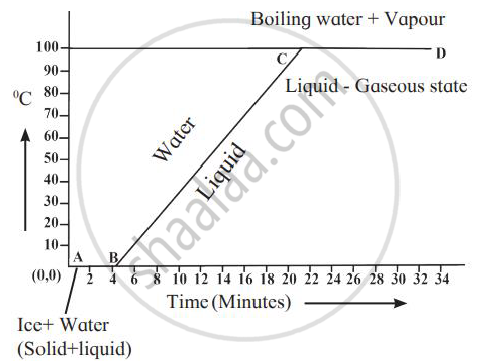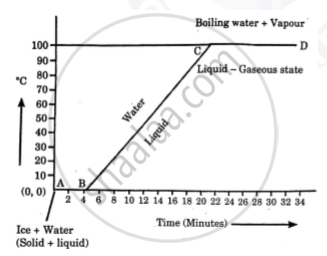Advertisements
Advertisements
प्रश्न
Why does weather become pleasant when it starts freezing in cold countries?
उत्तर
Ice has the highest sp. latent heat of fusion of 336,000 jkg-1. Thus, every 1 kg of water at 0°C, on freezing releases 336,000 J of heat energy. As enormous amount of heat energy is released in atmosphere, therefore weather becomes pleasant.
APPEARS IN
संबंधित प्रश्न
State two factors upon which the rate of emission of thermions depends.
What is the Greenhouse effect?
The specific latent heat of fusion of water is ______.
During transformation of liquid phase to solid phase, the latent heat is ______.
Explain the following temperature vs time graph.

Explain the following temperature Vs. time graph:

Define the following terms:
(i) Specific latent heat,
(ii) Specific latent heat of fusion.
What is the name given to the energy absorbed during a phase change?
A substance changes from its solid state to the liquid state when heat is supplied to it. What name is given to heat absorbed by the substance.
Name two factors on which the heat absorbed or given out by a body depends.
Explain why water is used in hot water bottles for fomentation and also as a universal coolant.
When 1 g of ice at 0 °C melts to form 1 g of water at 0 °C then, is the latent heat absorbed by the ice or given out by it?
Explain the statement; “The specific latent heat of vaporization of wafer is 2260 × 103 J/kg”.
1 kg of water is contained in a 1.25 kW kettle. Assuming specific heat capacity of water = 4.2 J/g °C and specific latent heat of vaporization = 2260 J/g, calculate:
(i) the time taken for the temperature of water to rise from 25°C to its boiling point,
(ii) the mass of water which evaporates per minute from the boiling water.
If pressure increases, the melting point of a substance ______.
Write scientific reason.
Even if boiling water is constantly heated, its temperature does not rise.
Write scientific reason.
Use a pressure cooker to cook food in cold air.
Specific latent heat L = ______.
Give some practical applications of specific latent heat of ice.
